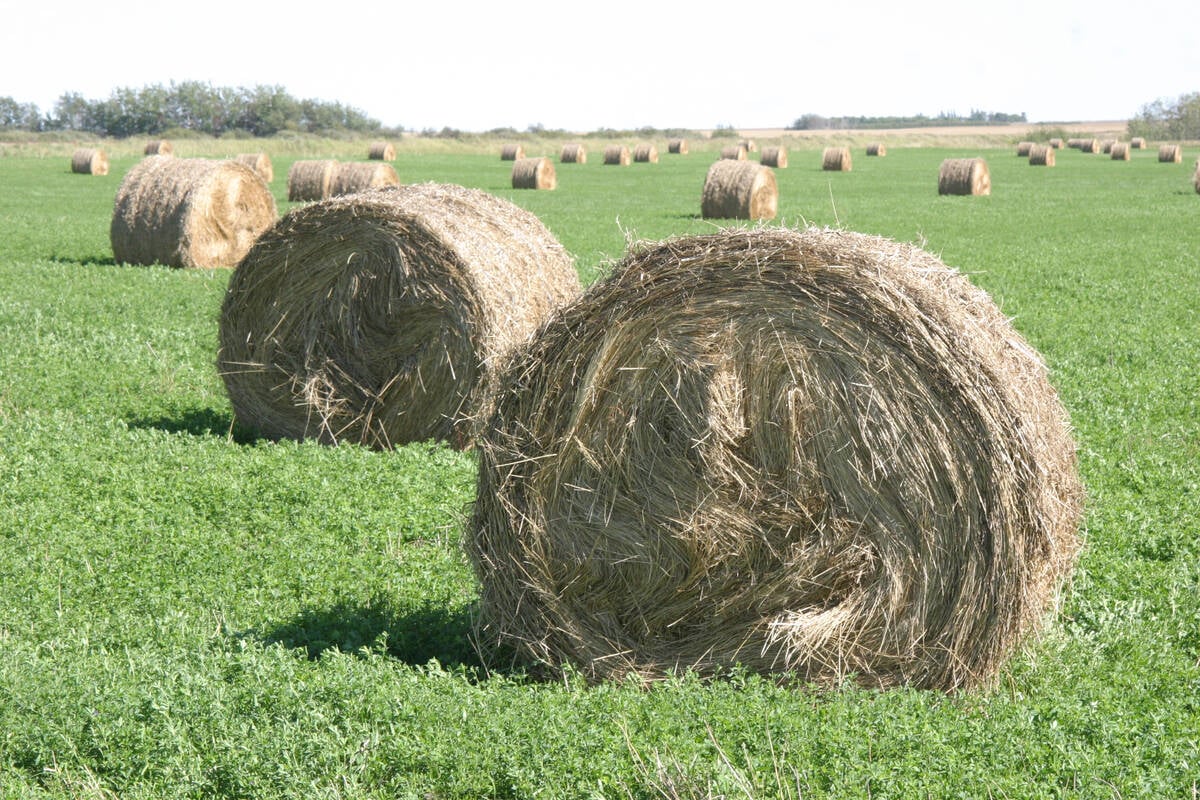CARDSTON, Alta. — Earlier this year, Rick West went to check on a calf he had left in a shed on his ranch near Waterton National Park.
He found that a grizzly bear had ripped open the shed, dragged out the calf, killed it and ate it.
It was a little too close for comfort, and now the rancher worries that it may only be a matter of time before a grizzly kills someone in the nearby park or its environs.
Conflicts between people and carnivores, particularly grizzly bears, have been growing steadily in southern Alberta over the past 15 to 20 years, said Jeff Bectell, president of the Waterton Biosphere Reserve Association.
Read Also

Breaking down successful winter feeding into six steps
It’s that time of year when it is important to start planning for a cow herd’s winter feeding program. Here are six steps I think are necessary to consider when getting your feed tested.
The group is dedicated to reducing those conflicts while acknowledging that both humans and bears have a place in the landscape.
Bectell said the biosphere reserve designation for the region, conferred in 1979, brings with it no particular authority. However, it does come with goals to ensure producers are fairly compensated for livestock deaths from grizzlies.
It also tasks the group with helping improve human and bear safety, prevent bears and wolves from becoming problem animals and informing people of resources available to make those things happen.
Among the association’s recent projects is a system of strategically placed steel bins in parts of bear-populated Cardston County, where ranchers can deposit dead stock.
Contents of the bear-proof bins are then collected by the assistant agricultural fieldman and composted.
Bectell said the bin project is modelled after a similar operation that began in 2009 in the Municipal District of Pincher Creek, organized by the Drywood Yarrow Conservation Partnership.
Cardston launched its program in 2010, the County of Ranchland began in 2011 and the Municipal District of Willow Creek began this year.
Bectell said there is evidence elsewhere that the bins reduce human and bear conflicts.
“The (Montana based) Blackfoot Challenge found that when they did dead stock pickup up and some electric fences and some of the other projects, they saw a 93 percent reduction in carnivore conflicts with people, from 2003 to 2009.”
Before BSE was discovered in Alberta, rendering companies would pick up dead stock from ranches at no charge and made a business out of further processing.
Alternatively, ranchers would drag carcasses someplace where they could be eaten by scavengers, in-cluding coyotes, wolves and bears.
Regulations imposed to control BSE spread resulted in fees charged for livestock pickup. In southern Alberta, those fees are nine cents per pound, with a minimum charge of $75.
It can cost ranchers more than $100 to have a cow picked up, and $250 for a horse. The result was more ranchers leaving dead stock for scavengers.
And that led to greater potential for encounters with grizzly bears.
“The amount of dead stock being picked up and removed went down dramatically,” said Bectell.
“It’s just all about removing attractants so that we don’t have bears coming into the yard.”
The bin system was implemented with money provided by Alberta Fish and Wildlife. They are placed in strategic locations so ranchers can deposit carcasses, but some regulations are involved.
“In order to use the dead stock bins, you have to become a licensed transporter of specified risk materials,” Bectell said. “It sounds horrible but we can get you signed up in about five minutes and then your licence gets renewed annually.”
Costs within the dead stock pickup zone, which extends over four municipalities, are covered by the Waterton biosphere reserve.














